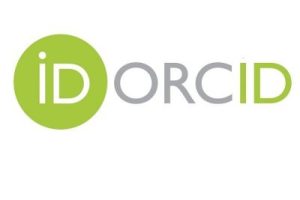РОЗВИТОК ІНШОМОВЛЕННЄВИХ КОММУНІКАТИВНИХ НАВИЧОК В УМОВАХ ІНТЕРАКТИВНОГО ОСВІТНЬОГО СЕРЕДОВИЩА
DOI:
https://doi.org/10.14308/ite000665Ключові слова:
освітні інновації, інтерактивне навчальне середовище, віртуальна реальність, доповнена реальність, комунікативні навичкиАнотація
У статті розглянуто дидактичні питання розробки інтерактивних навчальних середовищ до вивчення дисципліни «Іноземна мова (за професійним спрямуванням)»у віртуальній чи доповненій реальності. Доведено, що таке середовище як засіб організації англомовної професійно зорієнтованої навчальної діяльності студентів носить активний характер, включає мультимедійні засоби, є фахово та комунікативно спрямованим курсом для вивчення іноземної мови та відповідає комбінованому типу комп’ютерних програм. Розглянуто питання комунікативної іншомовленнєвої компетенції майбутніх користувачів іноземної мови як мети навчання, що може бути реалізована за умови оволодіння такими видами мовленнєвої діяльності, як рецепція (сприймання), продукція, інтеракція (взаємодія) та медіація (посередництво). Наведено систему тренувальних вправ з урахуванням взаємодії комунікативних видів діяльності та розглянуто інструкції до їх виконання в умовах штучного (віртуального або доповненої реальності) інтерактивного освітнього середовища. Визначено основні інструменти, які повинні бути імплементовані у освітнє середовище до вивчення іноземної мови у закладі вищої освіти. В результаті проведеного експерименту виявлено, що із дев’яти вправ, направлених на розвиток іншомовленнєвих комунікативних навичок, п’ять із них повинні містити завдання до аудіювання, сім – до говоріння (монологічного й діалогічного) п’ять – до виконання письмових завдань, три – до читання, дві – вправи на медіацію (посередницькі). Така кількість комунікативних вправ у поєднанні з елементами комп’ютерних ігор, вбудованих у освітнє середовище, та можливостями для студентів самостійно конструювати деякі освітні елементи (відео, блоги, веб-сторінки, чати) забезпечують студентоцентричної моделі навчального процесу та необхідну його мотивацію.
Завантаження
Показники метрики:
Посилання
1. OECD (2016). Innovating Education and Educating for Innovation: The Power of Digital Technologies and Skills, OECD Publishing, Paris. Retrieved from http://dx.doi.org/10.1787/9789264265097-en.
2. European Ambassadors for Creativity and Innovation (2009), Manifesto, European Union, Retrieved from http://www.create2009.europa.eu/fileadmin/Content/Downloads/%20PDF/Manifesto/manifesto.en.pdf.
3. Ananiadou, K. & Claro, M. (2009). 21st century skills and competences for new millennium learners in OECD countries, OECD Education Working Papers. No. 41, OECD Publishing. Retrieved from http://dx.doi.org/10.1787/218525261154.
4. Liu, T.Y. (2009). A context-aware ubiquitous learning environment for language listening and speaking. Journal of Computer Assisted Learning, 25, 515-527. doi:10.1111/j.1365-2729.2009.00329.x.
5. Ніколаєва, С.Ю. (наук. ред). (2003). Загальноєвропейські Рекомендації з мовної освіти: вивчення, викладання, оцінювання. Київ: Ленвіт.
6. Управління освіти і науки України. (2017). Методичні рекомендації про викладання навчальних предметів у загальноосвітніх навчальних закладах. Retrieved from https://osvita.ua/doc/files/news/568/56860/metod_rekom_2017.pdf.
7. Вереітіна, І.А. (2012). Віртуальність в освітньому середовищі. Теоретичний та науково-методичний часопис «Вища освіта України», тематичний випуск «Європейська інтеграція вищої освіти України у контексті Болонського процесу», №3 (додаток 2).
8. Cieutat, J.-M., Hugues, O. & Ghouaiel, N. (2012). Active Learning based on the use of Augmented Reality Outline of Possible Applications: Serious Games, Scientific Experiments, Confronting Studies with Creation, Training for Carrying out Technical Skills. International Journal of Computer Applications. 46 (20), 31-36. Retrieved from https://hal.archives-ouvertes.fr/hal-00739730/document.
9. Barab, S.A. et al., (2000). Virtual solar system project: building understanding through model building. Journal of Research in Science Teaching, 37(7), 19–756.
10. Liu, T. Y. (2009). A context-aware ubiquitous learning environment for language listening and speaking. Journal of Computer Assisted Learning, 25, 515-527. doi: http://10.1111/j.1365-2729.2009.00329.x.
11. Ibáñez, M. B., Di Serio, Á., Villarán, D. & Delgado, C. (2014). Experimenting with electromagnetism using augmented reality: Impact on flow student experience and educational effectiveness. Computers & Education, 71, 1-13. doi: http://10.1016/j.compedu.2013.09.004.
12. Cuendet, S., Bonnard, Q., Do-Lenh, S. & Dillenbourg, P. (2013). Designing augmented reality for the classroom. Computers & Education, 68, 557-569. doi: http://10.1016/j.compedu.2013.02.015.
13. Pei-Hsun, E. L. & Ming-Kuan, T. (2013). Using augmented-reality-based mobile learning material in EFL English composition: An exploratory case study. British Journal of Educational Technology, 44(1), 1-4. doi: http://10.1111/j.1467- 8535.2012.01302.x.
14. Tsai, M., Liu, P. & Yau, J. (2013). Using electronic maps and augmented realitybased training materials as escape guidelines for nuclear accidents: An explorative case study in Taiwan. British Journal of Educational Technology, 44(1), 18-21. doi: http://10.1111/j.1467-8535.2012.01325.x.
15. Balog, A., Pribeanu, C. & Dragos, I. (2007). Augmented reality in schools: Preliminary evaluation results from a summer school. International Journal of Social Sciences, 2(3), 163-166.
16. Salmi, H., Sotiriou, S. & Bogner, F. (2010). Visualising the Invisible in Science Centres and Science Museums: Augmented Reality (AR) Technology Application and Science Teaching. In Web-Based Learning Solutions for Communities of Practice: Developing Virtual Environments for Social and Pedagogical Advancement. IGI-Global, pp. 185-208.
17. SCeTGo. (2018). Science Center To Go – A mixed reality learning environment of miniature exhibits. Retrieved from http://www.sctg.eu.
18. Cabero J. & Barroso J. (2016) The educational possibilities of Augmented Reality. NEW APPROACHES IN EDUCATIONAL RESEARCH, Vol. 5. No. 1, 44-50 ISSN: 2254-7399 doi: http://10.7821/naer.2016.1.140.
19. Савич, Л. (2010). Культура мовлення вчителя: аналіз наукових розвідок О.М. Біляєва. Проблеми підготовки сучасного вчителя, №2.
20. Вашуленко, М.С. (2011). Методика навчання української мови в початковій школі. Навчально-методичний посібник для студентів вищих навчальних закладів. Київ: Літера.
21. Дубасенюк, О. А. (2004) Інноваційні навчальні технології – основа модернізації університетської освіти. Освітні інноваційні технології у процесі викладання навчальних дисциплін, 3-14.
22. Licht, A.H, Tasiopoulou & E., Wastiau, P. (2017). Open Book of Educational Innovation. European Schoolnet, Brussels.
23. Dumont, H., Instance, D. & Benavides, F. (eds) (2010), The Nature of Learning: Using Research to Inspire Practice. OECD Publishing. Retrieved from https://www.oecd-ilibrary.org/education/the-nature-of-learning_9789264086487-en.
24. Willis J.R. & Leaver B.L. (2004). Task-based instruction in foreign language education: practices and programs. Retieved from http://www.eun.org/documents/411753/817341/Open_book_of_
Innovational_Education.pdf.
25. Максименко, С.Д. (2004). Загальна психологія: Навчальний посібник. Київ: «Центр навчальної літератури».
</uk>
<en>
1. OECD (2016). Innovating Education and Educating for Innovation: The Power of Digital Technologies and Skills, OECD Publishing, Paris. Retrieved from http://dx.doi.org/10.1787/9789264265097-en.
2. European Ambassadors for Creativity and Innovation (2009), Manifesto, European Union, Retrieved from http://www.create2009.europa.eu/fileadmin/Content/Downloads/%20PDF/Manifesto/manifesto.en.pdf.
3. Ananiadou, K. & Claro, M. (2009). 21st century skills and competences for new millennium learners in OECD countries, OECD Education Working Papers. No. 41, OECD Publishing. Retrieved from http://dx.doi.org/10.1787/218525261154.
4. Liu, T.Y. (2009). A context-aware ubiquitous learning environment for language listening and speaking. Journal of Computer Assisted Learning, 25, 515-527. doi:10.1111/j.1365-2729.2009.00329.x.
5. Nikolaeva, S.Yu. (eds.). (2003). European Recommendations on Language Education: Study, Teaching, and Evaluation. Kyiv: Lenvit.
6. Department of Education and Science of Ukraine. (2017). Methodical recommendations on teaching teaching subjects in general educational institutions. Retrieved from https://osvita.ua/doc/files/news/568/56860/metod_rekom_2017.pdf.
7. Vereitina, I.A. (2012). Virtuality in the educational environment. Theoretical and methodological journal "Higher Education of Ukraine", thematic issue "European Integration of Higher Education of Ukraine in the Context of the Bologna Process", No. 3 (Annex 2).
8. Cieutat, J.-M., Hugues, O. & Ghouaiel, N. (2012). Active Learning based on the use of Augmented Reality Outline of Possible Applications: Serious Games, Scientific Experiments, Confronting Studies with Creation, Training for Carrying out Technical Skills. International Journal of Computer Applications. 46 (20), 31-36. Retrieved from https://hal.archives-ouvertes.fr/hal-00739730/document.
9. Barab, S.A. et al., (2000). Virtual solar system project: building understanding through model building. Journal of Research in Science Teaching, 37(7), 19–756.
10. Liu, T. Y. (2009). A context-aware ubiquitous learning environment for language listening and speaking. Journal of Computer Assisted Learning, 25, 515-527. doi: http://10.1111/j.1365-2729.2009.00329.x.
11. Ibáñez, M. B., Di Serio, Á., Villarán, D. & Delgado, C. (2014). Experimenting with electromagnetism using augmented reality: Impact on flow student experience and educational effectiveness. Computers & Education, 71, 1-13. doi: http://10.1016/j.compedu.2013.09.004.
12. Cuendet, S., Bonnard, Q., Do-Lenh, S. & Dillenbourg, P. (2013). Designing augmented reality for the classroom. Computers & Education, 68, 557-569. doi: http://10.1016/j.compedu.2013.02.015.
13. Pei-Hsun, E. L. & Ming-Kuan, T. (2013). Using augmented-reality-based mobile learning material in EFL English composition: An exploratory case study. British Journal of Educational Technology, 44(1), 1-4. doi: http://10.1111/j.1467- 8535.2012.01302.x.
14. Tsai, M., Liu, P. & Yau, J. (2013). Using electronic maps and augmented realitybased training materials as escape guidelines for nuclear accidents: An explorative case study in Taiwan. British Journal of Educational Technology, 44(1), 18-21. doi: http://10.1111/j.1467-8535.2012.01325.x.
15. Balog, A., Pribeanu, C. & Dragos, I. (2007). Augmented reality in schools: Preliminary evaluation results from a summer school. International Journal of Social Sciences, 2(3), 163-166.
16. Salmi, H., Sotiriou, S. & Bogner, F. (2010). Visualising the Invisible in Science Centres and Science Museums: Augmented Reality (AR) Technology Application and Science Teaching. In Web-Based Learning Solutions for Communities of Practice: Developing Virtual Environments for Social and Pedagogical Advancement. IGI-Global, pp. 185-208.
17. SCeTGo. (2018). Science Center To Go – A mixed reality learning environment of miniature exhibits. Retrieved from http://www.sctg.eu.
18. Cabero J. & Barroso J. (2016) The educational possibilities of Augmented Reality. NEW APPROACHES IN EDUCATIONAL RESEARCH, Vol. 5. No. 1, 44-50 ISSN: 2254-7399 doi: http://10.7821/naer.2016.1.140.
19. Savich, L. (2010). Teacher's Speech Culture: An Analysis of Scientific Intelligences by O.M. Bilyayev. Problemy pidhotovky suchasnoho vchytelia, №2.
20. Vashulenko, M.S. (2011). Methodology of teaching Ukrainian in elementary school. Educational and methodical manual for students of higher educational institutions. Kiev: Litera.
21. Dubaseniuk, O.A. (2004) Innovative educational technologies - the basis of the modernization of university education. Osvitni innovatsiini tekhnolohii u protsesi vykladannia navchalnykh dystsyplin, 3-14.
22. Licht, A.H, Tasiopoulou & E., Wastiau, P. (2017). Open Book of Educational Innovation. European Schoolnet, Brussels.
23. Dumont, H., Instance, D. & Benavides, F. (eds) (2010), The Nature of Learning: Using Research to Inspire Practice. OECD Publishing. Retrieved from https://www.oecd-ilibrary.org/education/the-nature-of-learning_9789264086487-en.
24. Willis J.R. & Leaver B.L. (2004). Task-based instruction in foreign language education: practices and programs. Retieved from http://www.eun.org/documents/411753/817341/Open_book_of_
Innovational_Education.pdf.
25. Maksimenko, S. D. (2004). General Psychology: Textbook. Kyiv: "Tsentr navchalnoi literatury".
</en>
##submission.downloads##
Опубліковано
Як цитувати
Номер
Розділ
Ліцензія
This work is licensed under a Creative Commons Attribution-NonCommercial-ShareAlike 4.0 International License.





























